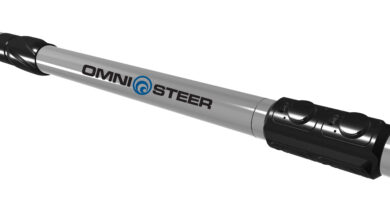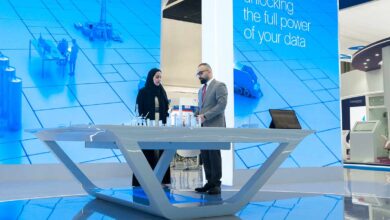Downhole shakeup
Holistic approach, real-time monitoring dampen effects of shock, vibrations
By Joanne Liou, Associate Editor

Rumblings, from surface to TD, are omnipresent throughout a drilling operation. From long-reach horizontal wells onshore the US to the deepest offshore wells around the world, shock and vibration takes its toll on drilling tools. Oftentimes, it accelerates fatigue on components and may result in work stoppage to pull out of hole. New developments in shock and vibration monitoring are allowing drilling personnel to gain a better sense of downhole dynamics and ways to mitigate their negative effects.
When energy is applied to a system and not all the energy is directed to its target, the remainder will dissipate in unintended forms, such as drill string fatigue and heat. Shock and vibration are inherently induced by the drill bit interacting with formations, especially geological transitions, “which then can excite natural resonances within the drill string,” Mark Hutchinson, consultant at Leader Drilling International, explained. “Vibrations are also sometimes induced by the drill string itself rolling or sliding around the circumference of a borehole or when stabilizers pass around a tight bend in a hard formation.”
 In the wellbore, the effects of shock and vibration are multifaceted. Lateral vibrations, for example, can make the BHA more prone to mechanical or electronic failure. Additionally, “shock and vibrations can cause failures to your rotary steerable system. It can cause failures to your MWD systems, affecting your formation evaluation log quality,” Mazhar Mahmood, MWD/LWD Product Line Leader at GE Oil & Gas, said. “It can significantly reduce bit life. When you experience these downhole vibrations, the rate of transfer, or the efficiency of transfer of surface energy to the bit, is reduced.”
In the wellbore, the effects of shock and vibration are multifaceted. Lateral vibrations, for example, can make the BHA more prone to mechanical or electronic failure. Additionally, “shock and vibrations can cause failures to your rotary steerable system. It can cause failures to your MWD systems, affecting your formation evaluation log quality,” Mazhar Mahmood, MWD/LWD Product Line Leader at GE Oil & Gas, said. “It can significantly reduce bit life. When you experience these downhole vibrations, the rate of transfer, or the efficiency of transfer of surface energy to the bit, is reduced.”
Although not all vibrations can be predicted, industry is learning to better use real-time data to control drilling parameters in a way that would maximize the transfer of energy and minimize the effects of shock and vibration. Under this proactive approach, operators and service companies integrate pre-drill modeling with real-time well data to make better decisions before and during a drilling operation.
In some cases, the industry is even learning to put vibration to good use. National Oilwell Varco (NOV), for example, has developed technologies that intentionally create oscillations in the drill string. “Intentional vibration to reduce friction improves weight transfer, which improves weight on bit (WOB),” Daan Veeningen, iTools Product Line Manager at NOV, said. In the Eagle Ford, he said, ConocoPhillips has achieved ROP improvements using intentional vibrations to reduce stick slip.

Real-time decisions
The industry has collected millions, if not billions, of data points relating to pressures, depths, direction and other variables in its wells, and BP wants to put that data to good use. With the goal of enhancing drilling efficiency, the operator is working with software developer KONGSBERG to utilize that data through a series of dashboard-style consoles, including one that targets shock and vibration. Called the BP Well Advisor, this comprehensive real-time monitoring system integrates and analyzes data of past and current operations to make informed decisions in real time.
“As we acquire data, our prognosis of where things are going to arrive in the well changes,” Ken Gibson, Project Manager for the BP Well Advisor, said. “The advantage of (BP Well Advisor) is that everyone – the people on the rig, the people in the office, specialists that may be in a lab in the UK – can all see the same data. We’re really trying to achieve a shared situational awareness.” BP has been working on the Well Advisor software for three years, focusing on two goals – to make better operational decisions and ensure the operational integrity of equipment, Mr Gibson told DC at the 2014 Offshore Technology Conference in Houston in May.
An ROP console is being developed to address the effects of shock and vibration, initially targeting land operations in Oman, which is characterized by hard rock formations and a very low ROP – approximately 1-2 m/hr. The goal is to reach approximately 7-8 m/hr ROP or higher, explained Nick Whiteley, Global Deployment Lead for BP Well Advisor. “In order to make Oman economical, we need to get higher ROP. A lot of what the ROP console does is look at maximizing the energy at the bit. If you’re having shocks and vibrations, you’re wasting energy,” he said.
Well Advisor focuses on displaying analog data in a digital format that is more intuitive for the engineer to understand, Mr Whiteley explained. Surface algorithms are applied to downhole tools to measure shock and vibrations, providing real-time data that “is all displayable in this system. The Well Advisor system is built on top of data aggregation.”
The system advises the drilling engineer on controlled parameters – RPM, WOB, pump pressure, etc. “It’s going to recommend an operating window of those parameters, and the outcome of him staying within that window should be an enhanced rate of penetration.”
BP expects the ROP console to be completed in Q4 and to put it into field trial onshore Oman by the end of this year or early 2015. Another potential market for deployment is offshore Angola, Mr Whiteley said, where BP has also experienced slow ROP.

Workflow for optimization
When it comes to managing shock and vibrations, Baker Hughes emphasizes the engineering process and delivery of real-time services more than simply a toolbox of technical solutions. Measurements of specific dynamic and mechanical energies underline the need to apply a consistent process to improve best practices and develop tailored solutions, Scott Masson, Manager of Drilling Optimization Service Solutions, explained. “It’s really about the initial pre-well engineering analysis, where we have to understand and establish the challenges and objectives that our client has.”
Considering everything from the formation and bit interaction, from the BHA up to the rig drive system, “there are so many variables that affect shock and vibration,” Ahmed Al-Essa, Global Marketing Manager of Directional Drilling, said.
The initial planning process is critical to identify parameters that could potentially cause vibration in the system. This means understanding the complete drilling process – taking into consideration “all aspects of the drilling operation from the bit that breaks the rock, the drill string that connects the bit, BHA to surface and the drilling fluids. Taking into consideration only the individual elements of the drilling system in isolation will not be sufficient to deliver fit-for-purpose solutions. We need to take a holistic view to understanding the drilling challenges, performance barriers and deliver tailored technical solution to influence how we can enhance the drilling performance,” Mr Masson said.
A detailed analysis of various components follows, including analyses of well design and engineering modeling. This builds a better understanding of the drilling environment and barriers to reach TD.
Baker Hughes uses modeling software, including Advantage Engineering software, WellArchitect directional software and BHASYSPro software, during the well planning and analyses phases to examine the torque and drag and hydraulic effects within a given wellbore design. Modeling the BHA in conjunction with the well design helps to determine how stable the BHA will be in the wellbore, as well as where to place stabilizers and the configurations and compatibility of different components depending on the well profile. “From the pre-well planning phase, we will bring together key stakeholders to review the plan,” Mr Masson said.
Based on objectives established in pre-well planning, real-time downhole technology helps execute the plan by providing the driller and the drilling performance engineers the insight into downhole conditions and parameters. “It’s going to improve their working knowledge of the drilling environment and allow them to understand how to apply different parameters that are going to positively impact the drilling efficiency and drilling performance,” Mr Al-Essa said. Technologies, such as Baker Hughes’ CoPilot, transmit downhole dynamic and mechanical data in real time, enabling vibration management and drilling performance at the rig site. “This is real-time information that we can interpret and actively respond to.”
By proactively managing downhole parameters, such as WOB, torque on bit, bending moment and drill string rotation, shock and vibration can be mitigated. “Our drilling performance engineers are not only looking specifically at what the downhole dynamics and mechanical measurements might give them, they’re also correlating that with the formation evaluation data and geological information that our tools are providing,” Mr Al-Essa explained.
After drilling, a digital record of downhole dynamics, MWD and LWD log data supports post-well analysis. “The datasets help ascertain additional insight into the achieved drilling performance and opportunities to further improve when focused on a continuous drilling campaign,” Mr Masson stated. “The information that we can gather from the combination of downhole measurements and engineering software is significant. This helps us enhance our technical recommendations and solutions to our clients.”
Baker Hughes emphasizes that continuous improvement is key to delivering a step-change in performance. “This is about taking lessons learned and understandings from well applications that we can implement in subsequent wells,” Mr Masson said. “The cycle of pre-well, execution and post-well procedures and reviews help identify the best practices and recommendations for future wells,” he said.

Reducing inefficiencies
Reducing operational costs while increasing overall productivity is the driver behind a new MWD system that helps to measure shock and vibration in real time. “Operators are looking for efficiency, and (shock and vibration) is one of the known causes of inefficiencies in the drilling systems. Everybody is looking for ways and means to reduce, if not completely eliminate, these inefficiencies,” Mr Mahmood of GE Oil & Gas said.
The company’s Directive MWD Directional System adds real-time shock and vibration measurement capabilities to its Tensor MWD System. The new system, which was launched in March, enables adjustments and corrections to be made during drilling.
Through real-time monitoring, the system provides a numerical value and a color-coded flag to depict the downhole shock and vibration level. “We have eight discrete shock levels and vibration levels. At the lower end of the spectrum, which we designate as green, are nominal shocks, for example, shocks up to 20 G, where the driller is not required to take any corrective action,” Mr Mahmood explained. From 20-40 G, which are designated as orange and are considered moderate shocks, the driller is expected to start taking corrective action. “The corrective action depends on what is the more dominant mode of vibration. If, for example, you have axial vibrations or bit bounce, the typical adjustment is to decrease surface RPM while increasing surface weight on bit. This helps reduce the bit bounce or the axial shock.”
For lateral vibration caused by whirl of the drill string or the BHA in the borehole, the corrective action is typically to increase the surface WOB while reducing surface RPM. “This is what is meant by adjustment in real time; you now have a means of mitigating from surface, changing surface parameters – weight on bit, surface RPM or re-establishing a cutting pattern by drill bit. By changing these parameters based on the downhole mode of vibration, you can avoid equipment damage and minimize the loss of energy that is not being transmitted to the drill bit,” Mr Mahmood stated.
The development of this system was motivated by operator requests for real-time monitoring to help reduce costs and reduce the negative impact of vibration on the life of drilling tools. The Directive system has been designed with a reduced number of components and increased reliability of the sensor package, according to GE Oil & Gas. “A lot of data from the market place tells us that most MWD failures are caused by vibrations and by sensor package failures. We focused on ruggedizing the sensor package, improving its performance and accuracy over a longer period of time,” Mr Mahmood said.
The improved and ruggedized design of the sensor package makes it four times more stable than the industry standard for continuous operation at an elevated temperature of 175°C (347°F), according to GE.
The Directive system also improves on GE’s Tensor Directional Module, simplifying the tool from a three-board design to a single-board design with four channels of detectors. Each component of the system, including the temperature regulator and oscillator driver, is rated to 175°C and 20,000 psi. “We improved the layout and packaging to enhance reliability and functionality at higher temperatures,” Mr Mahmood explained.
Capacity of the main processing unit (MPU), which controls the functionality of the downhole MWD package, has increased from 8 to 32 MB for real-time diagnostics and lifetime events memory storage. The extra memory allows service and operating companies to monitor the entire history of deployment of MWD equipment. Over time, as sufficient data is collected, “we can actually build a predictive maintenance schedule. We believe some tools are either under-maintained, and they come to the shop only when a hard failure occurs,” Mr Mahmood said. “On the other extreme, we have tools that are over-maintained simply because there has been a predetermined schedule. A good way to optimize this would be to look at these lifetime event data sets and come up with a condition-based maintenance schedule, which would be predictive in nature.”
Extensive onshore field testing has been conducted on the new Directive MWD tool with different operators in the US, Huzefa Shakir, Technology Manager at GE Oil & Gas, said.

Good vibrations
The effects of vibrations on wellbore quality, ROP and tool longevity are most often negative. However, NOV is turning the tables by utilizing intentional vibrations for positive effects. “Sometimes we can use vibrations to our benefit,” Mr Veeningen of NOV said. “This goes against conventional wisdom that vibration is bad.”
Approaching shock and vibration management from the surface, NOV has been improving its V-Stab technology and has implemented the rental service of its SoftSpeed II technology, which controls the top drive in a way that mitigates torsional vibration. “SoftSpeed is able to identify stick-slip from surface data and fluctuate the top drive RPM such that it dampens much of the energy being reflected back down the string. This dampening in effect stops stick-slip,” Mr Veeningen said.
By controlling the top drive RPM in an intelligent way, ROP can be maximized while drill string fatigue is minimized. The company is currently applying the technology through a rental service to an onshore drilling campaign for ConocoPhillips.
In the Eagle Ford, “we’ve been doing this on one rig, and instantly it was brought onto a second rig (for ConocoPhillips). Drillers like it because you toggle a switch to activate SoftSpeed, and vibrations are immediately minimized,” Mr Veeningen said. “We do everything that everyone else is doing but with intentional vibrations. We change our drill string components, BHA design and drilling parameters to reduce those unintentional vibrations, but we also induce these harmonics.”
Targeting shock and vibration closer to the drill bit, NOV recently launched the FluidHammer Performance Drilling Tool, which creates a percussion force at the bit to increase drilling efficiency. “The FluidHammer replaces the conventional PDM (positive displacement motor) with a new fluid-activated, mechanically driven percussion drilling tool designed to increase drilling performance with induced axial pulses,” R.D. Morrison, Product Line Manager – Performance Drilling Tools, said.

The tool is configured to transmit axial pulses in a frequency range of 3 to 10 Hz based on flow rate and application. By combining the torque and rotation speed from a mud motor power section with a high-frequency, axial oscillation, the entire BHA oscillates with each pulse. The movement increases the cutting efficiency of the bit by creating additional forces to overcome the rock’s compressive strength, Mr Morrison added.
After two years of field testing, the tool was officially commercialized in May. Since then, the tool has drilled more than 115,000 ft and accumulated more than 6,425 drilling hours. NOV is further developing the tool to provide instantaneous data and high-memory data from downhole, Mr Morrison said.
Key to mitigating shock and vibration is the capability for real-time monitoring, with the ability to turn it on and off. “The intentional vibrations attacking from both ends with measurement validation improves drilling performance,” Mr Veeningen said. “A lot of these vibrations and harmonics happen at high frequencies, approximately 40 Hz. In order to characterize a 40-hz event, you have to sample twice the frequency – 80 Hz.”
The recently launched BlackStream EMS (Enhanced Measurement System) provides real-time downhole data at rates exceeding 80 Hz. It acquires measurements, including multi-axis vibration, load, torque, pressure, temperature and rotation, through wired drill string telemetry. “We can get high-speed data to not only validate but also hone in the technology,” Mr Morrison said. “If we can see it instantaneously, the more we can improve on the technology or give the client better parameters to run the drilling operation.”
Directive and Tensor are trademarks of GE. Advantage, WellArchitect, BHASYSPro and CoPilot are trademarks of Baker Hughes. SoftSpeed and BlackStream are trademarks of National Oilwell Varco.
GE’s Mazhar Mahmood spoke with DC about the Directive system at the 2014 OTC. Click here to watch the video.
Click here watch an exclusive interview with NOV’s Scott Powell about the FluidHammer tool.




